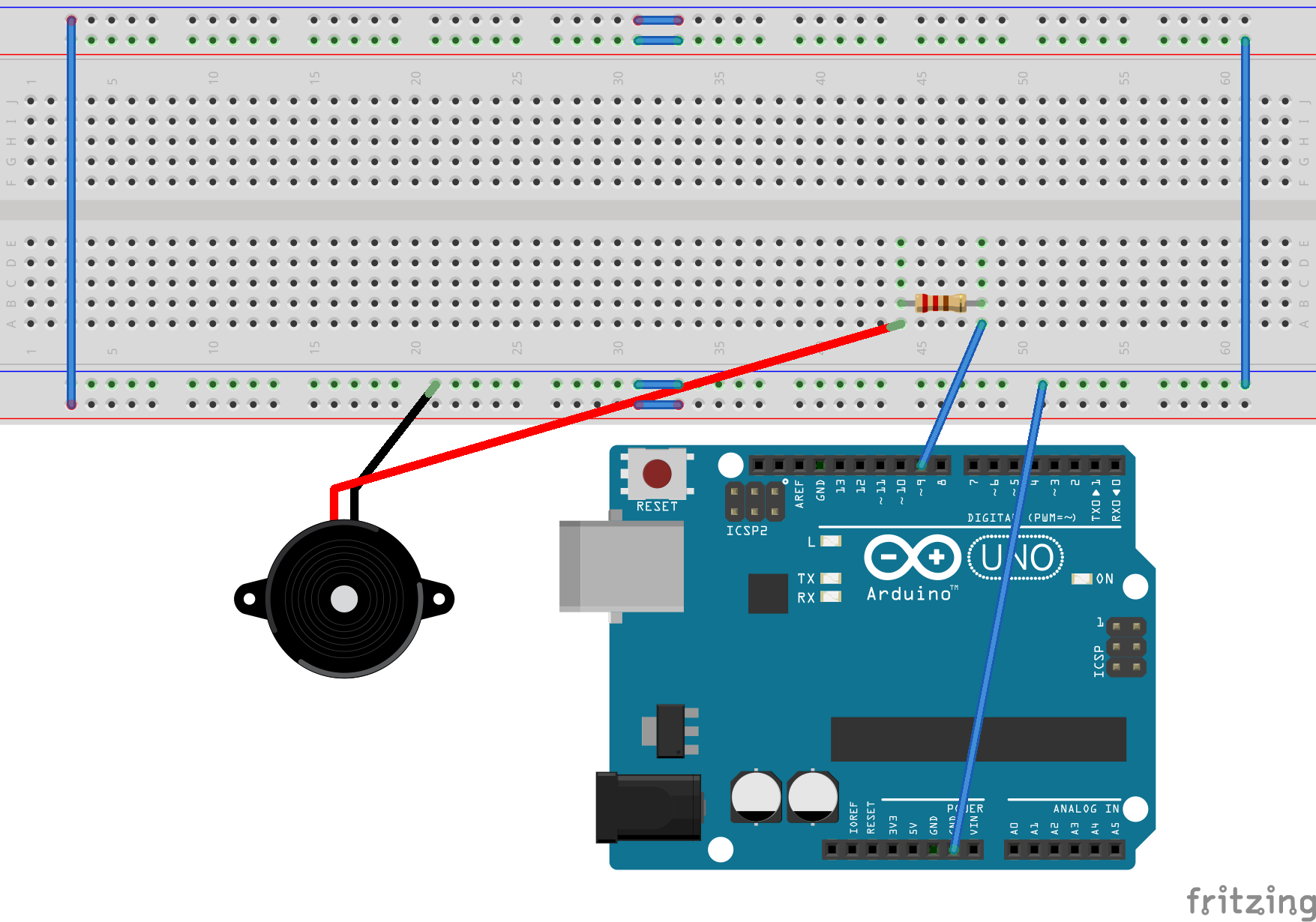

Thus every 5ms the output changes, and you get a square wave at 50% duty cycle, which means the output is on for precisely half the time. Next time it's called it sets the output high. The first time the interrupt is called, it sets the output low, and returns to whatever your program was doing. So tone(PIN,100) will set a timer interrupt to be called every 5ms. 100Hz means the output repeats every 1/100 of a second, or 10ms.

The tone() function, which I expect you've run into by this point, outputs a square wave at a specified frequency. I'm not a master at programming, but I'm not a beginner either.Īrduinos offer only digital output: the output is either on (+5V) or off (0V). If not, could you explain it in the clearest way possible.
#Arduino piezo bell sound code#
I understand that it involves phase shifts and adding frequencies of notes, but how do you translate this into code for a piezo buzzer? If you could post some example code that would be greatly appreciated. I mean like the bass and treble clef notes are played simultaneously on the buzzer. Is it possible to play the song on a piezo buzzer so it sounds like it's being played on a piano (or at least close to). Now I'm a piano player (I took AP Music theory), and the problem I'm having is that I'm only able to play one note only the piezo buzzer. Using some creative liberties, I found a nice piano piece of this song (link here). What better way to be creative than to use "Firework" by Katy Perry. We learned about creating songs using the piezo buzzer. Enough about that, right now in the class we're experimenting with the piezo buzzer (it looks like this). Serial.My high school electronics class decided to buy some arduino uno kits, which I must say are extremely cool. Int record = //record 10 readings in a row #include Ĭonst int piezo = 0 // the piezo is connected to analog pin 0 I added averaging of 10 readings to the code as well that would do the similar effect as the conditioning circuit. I do not have the parts at hand to try yours.
#Arduino piezo bell sound series#
I then modified the circuit a bit moving zener to first position parallel before series diode.

I got erratic notes and most of the time nothing. I tested the circuit given on the piezo conditioning page you linked. So maybe for this application this may not be the issue. This is from my experience with sound recording. So I wonder what there is to do in order to increase or control the sensitivity of a piezo.īTW I looked into electret mics as well, but these seem to pick up too much ambient unwanted noises.
#Arduino piezo bell sound serial#
I have connected (+)red-wire to Arduino analog pin (-)black-wire ground parallel with 1Mohm resistor, 5v zener and small capasitor(47pf?).ĭoes the way I wire it to Arduino have much to do with sensitivity of the piezo? If I read the piezo output with Arduino serial monitor from 0-1023 I get values around 300 most of the time. I hoped to get reading in lesser numbers when further away and higher when near. I need it to pick up steps from 2-3m away along with steps next to it. While I get good output from the piezo with direct hit with my fingernail I need much more sensitivity for the project I am working on.

I have common disc type piezo sensor/transducer placed on the floor.


 0 kommentar(er)
0 kommentar(er)
